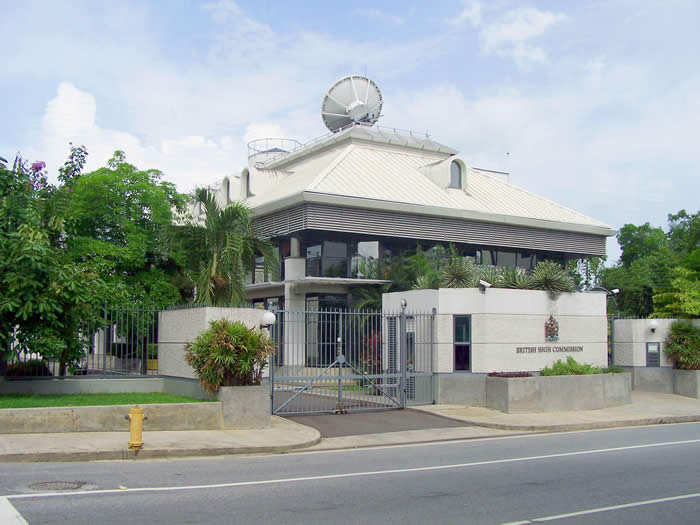Project Name: British High Commission – Trinidad and Tobago
Type of Project: Commercial Building (Structural)
Director in Charge:Anthony Farrell
Design Engineer: Anthony Farrell
Design Team: Design Collaborative (Architects)
C.E.P Limited (Structural Engineers)
Enco. (Electrical and Mechanical Engineers)
Year of Commencement: 1991
Year of Completion: 1992
Cost (TTD): $12 million
Building Description:
The Trinidad and Tobago British High Commission is located at St. Clair, Port of Spain. The office building is 3 stories high from ground level with one underground level. The building is supported on a combination of pad and strip footings. There is insitu reinforced concrete (r.c) slab on grade at the basement level. The floors above basement consist of insitu r.c (125 mm thick) slabs. These slabs are supported by insitu circular (440 mm diameter) r.c columns, and beams. There are r.c columns located at the front and rear exterior of the building. Pipes are encased in these columns to allow for drainage.
There are mild steel pipes (273mm diameter) located on top the exterior columns, which provide additional support for the beams at second floor. There are r.c block walls located all round the main building at second floor. At roof level, there are inclined r.c slabs covered by Rectangular Hollow Section (RHS) steel rafters. The building has an approximate gross area of 660 square meters of parking, and 1,265 square meters of office space.
One unique feature of this building is its main staircase. This is located at the building’s center from the ground to first floor. The staircase is supported at the ground floor slab and the first floor beam without supporting columns. All designs had to be carried out using British codes with the designs reviewed by the Development Division of the U.K Government.
